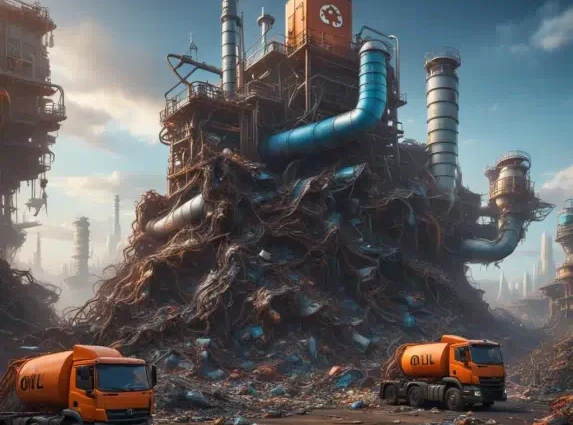Plastic consumption has increased fourfold in last 30 years. Meanwhile, global plastic recycling rates have failed to reach two digits. Less than 10% of all the plastic ever produced has been recycled.

While many of us are doing our part to save the planet and dutifully putting our plastics in recycling bins — it is nearly all one big charade. Why? Because recycling bins do not take your recyclables to fancy facilities to actually recycle them.
In fact, just 5% of U.S. plastic waste is properly recycled. Globally, the plastic recycling rate is slightly higher at 9% but both of these numbers indicate that the effort you take to carefully sort your recyclables from your trash is almost for naught because most of our plastic ends up in either landfill or the environment.

Big Oil was aware that recycling was not a realistic solution back in 1974, when an industry insider revealed there was no economically viable way to recycle most plastics. The plastic industry created the illusion of recycling to divert attention from the actual problem of plastic pollution when in the late 1980s, public opinion began to shift and polls showed an increasing percentage of the general public believed plastics were harmful to the environment and public health.
This widespread concern caused Big Oil to start spending hundreds of millions to sell the idea that the majority of plastic could in fact be recycled. So began a massive disinformation campaign which even included the building of recycling centers, ready to deal with the new plastic recycling boom. Many of these plants closed in less than five years.
Coinciding with these ad campaigns and the lie of an expanding recycling industry, the plastic industry created Resin Identification Codes (RICs) to deceive consumers into thinking that there was a thriving recycling industry.

The RIC numbers, found on the bottom of plastic products, were meant to give the impression that plastic was easily recyclable. Only 30% of number 1 and 2 plastics can be recycled, while numbers 3 through 7 are even more challenging to repurpose. Specifically, numbers 6 and 7 are nearly impossible to recycle.
Big Oil assured us it was ok to continue to buy and use plastics because they were going to be reused, which is not true so it is time to STOP using and asking Governments to put a cap on the production of plastics itself.
Reference- National Geographic, Earth Day Network Newsletter, US EPA website, The New York Times






